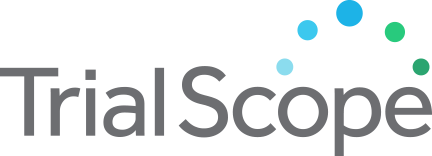PeDRA is here to connect you with opportunities to conduct pediatric dermatology research. Use the search filters to find active clinical trials in your area of interest. The information returned from your search has been obtained from ClinicalTrials.gov, a service of the U.S. National Institutes of Health.
If you think a clinical trial is missing from the search please let us know! We’d also love to hear your suggestions for additional filters or features that you’d like to see. This resource will evolve alongside the evolving needs of our research alliance.
-
10 Year Registry of Children (Ages 2-17 Years) With Eczema That Have Used Pimecrolimus
This study will examine the risk of systemic malignancies in pediatric patients with atopic dermatitis exposed to Elidel 1% cream.
-
24 Weeks Double-blind Randomized Placebo-controlled Trial to Evaluate Efficacy, PK, Safety of LOU064 in Adolescents (12 - <18) With CSU and Inadequate Response to H1-antihistamine Followed by Optional 3 Years Open-label Extension and an Optional 3 Years Safety Long-term Treatment-free Follow-up
The purpose of this trial is: 1. to assess the efficacy, pharmacokinetics, and safety of remibrutinib vs. placebo in adolescents from 12 to < 18 years of age suffering from chronic spontaneous urticaria inadequately controlled by H1-antihistamines 2. to collect long-term efficacy, safety and tolerability data on remibrutinib in adolescents after having completed 24 weeks of treatment 3. to collect safety data in this population for up to three years after the last dose of study treatment
-
99mTc-MIRC213 SPECT/CT for the Detection of HER2-positive Breast Cancer
This is an open-label single photon emission tomography/computed tomography (SPECT/CT) study to investigate the imaging performance of 99mTc-MIRC213 in breast cancer patients. A single dose of 11.1-14.8Mega-Becquerel (MBq) per kilogram body weight 99mTc-MIRC213 will be injected intravenously. Visual and semiquantitative method will be used to assess the SPECT/CT images.
-
Acceptance and Commitment Therapy-based Eczema Management Programme
This pilot randomised wait-list controlled trial aims to determine the feasibility, acceptability and preliminary effects of a Family Acceptance and Commitment Therapy-based Eczema Management Programme (FACT-EMP) on the health outcomes of both children patients and their main caregivers over a 3-month post-intervention.
-
Access to Pediatric Rheumatology Centers for JIA Patients: Factors Associated With Time to Access Pediatric Rheumatology Centers
JIA patients, their parents, and the health care professionals experience the complexity of the initial care pathway. The aim of the study is to explore the referral pathway to access pediatric rheumatology centers for JIA patients. The exploration will aim to identify the barriers and facilitators of referral, based on the conceptual framework of the health literacy. The investigators will conduct a qualitative study using semi-structured interviews. The perspectives of parents/children/health care professionals will be crossed to enrich the data.
-
A Clinical Trial of Pulsed-dye Laser Versus Timolol Topical Solution Versus Observation on the Growth of Hemangioma in Newborn
The purpose of this study is to find out if pulsed dye laser treatment or timolol maleate 0.5% gel can help infants who have a hemangioma. The investigators also want to find out if pulsed dye laser treatment and timolol maleate 0.5% gel are safe to use without causing too many side effects. Hemangioma is a common type of birthmark. These birthmarks happen when many new blood vessels grow in a specific area on the skin. Blood vessels are tiny tubes that carry blood through the body. No one knows what causes blood vessels to group together. Most birthmarks don't hurt at all and they usually aren't a sign of any kind of illness. Lots...
-
A Comparative Clinical Trial Evaluating the Effect and Safety of Tacrolimus Versus Hydrocortisone
One of the most frequent skin conditions is atopic dermatitis (AD), characterized by its pruritic inflammation effect. Where the prevalence of AD increased in the last three decades by two or three folds worldwide, especially in developed countries, AD is supposed to affect about 15% to 30% of children, and 2% to 10% of adults. This type of dermatitis is frequently linked to a family history of other atopic illnesses such as allergic rhinitis or asthma.
-
ACTHar in the Treatment of Lupus Nephritis
Systemic Lupus Erythematosus (SLE) is a disease in which the immune system attacks the healthy cells and tissues, causing inflammation that can damage organs in the body. About 50% of SLE patients experience inflammation in the kidneys. The purpose of this study is to determine the effectiveness and safety of two dosing arms of ACTHar gel in treating proliferative Lupus Nephritis (LN). This study hypothesizes that both dosing arms of ACTHar are safe and effective in treating proliferative LN (Class III and IV).
-
Adjuvant Ovarian Suppression Plus Aromatase Inhibitor or Tamoxifen in Young Women
The objective of this study is to compare the curative effects in patients under the age of 35 with hormone receptor positive breast cancer and high recurrent risk factors including large tumor or metastatic lymph nodes randomized to ovarian function suppression (OFS) plus aromatase inhibitors or OFS plus tamoxifen as adjuvant endocrine therapy, and explore the differences of curative effects between different subtypes to provide direct evidence for treatments of young breast cancer patients.
-
Administration for Placebo Group and Evalution the Safety and Efficacy in Atopic Dermatitis Patients
A Multi-center, Open, Single-arm Clinical Trial to Evaluate the Safety and Efficacy of FURESTEM-AD inj. in Patients with Moderate to Severe Chronic Atopic Dermatitis Who Participated in a Placebo Group in K0102 Clinical Trial: 2nd Extension Study of K0102
